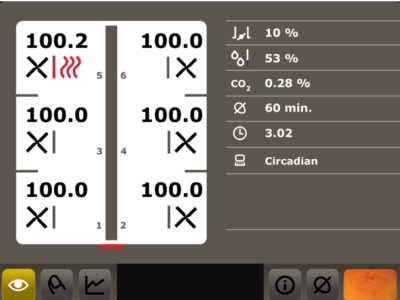



Preventing headaches with preventive maintenance
Pas Reform incubation specialist shares experience from a recent hatchery visitAs an incubation specialist, I always visit our customers with a clear vision; to keep the hatchery abreast of the latest ideas and to maximize the hatchability and quality of the day-old chicks. While my focus is on the biology side of the hatchery, technology and biology share a lot of common ground in the incubation field, as I can only work on improvements to the biology if the machines function properly.
This overlap was clearly visible during one incubation consultation. Walking through the hatchery, I noticed a particular issue in three different machines. In these setters, one or two sections had been heating for a long period while the other sections were stable, with a steady temperature. I am not a technical person, but I understood that there was a problem at once. The hatchery was about six years old, and it turned out that the solenoid valves responsible for cooling were worn and leaking cold water into the coils, and should have been replaced.

Talking to the manager, it became clear that this had been going on for a few weeks. The hatchery manager sighed, and said that the maintenance staff had complained that the issue was “giving them a headache”. To replace the solenoid membranes, you need to climb on top of the machine, shut off the water supply and replace the valve. However, instead of doing this preventively for the whole machine, they waited until a membrane started leaking and then only replaced that one. Of course, the technicians found this very time-consuming.
Be that as it may, the importance of the issue and its relation to the biology is known: fluctuating temperatures between or within sections of a setter will lead to different development rates in embryos, and so the membrane needed to be replaced immediately. The technical manager groaned, picked up a membrane, and together we climbed on top of the machine to take care of it.
While replacing the membrane, we noticed that the other membranes were not in the best shape either! This should not have come as a surprise, as all parts of the same machine are exposed to the same conditions. It would therefore make sense to replace all the membranes at the same time, as otherwise you’re just waiting for the next failure alarm. And, as we know, such alarms always come during the most unfriendly hours. If you've ever experienced this, you may also appreciate my other blog: Getting a good night's sleep.
Even better would be a preventive maintenance programme, to replace parts before they reach the end of their technically recommended lifetime. This prevents this firefighting approach at inconvenient times. Also, if problems are discovered during regular checks, there is enough time to plan for the replacement of parts before they fail, which avoids disruptions to the incubation period.
You can compare this to driving a new car. You take your car regularly to a garage for check-ups and preventive maintenance to keep it running perfectly. However, a car runs for perhaps just three hours a day, while an incubator runs 24/7, year in, year out. If you think about it like this, it is not so strange that you need to carry out preventive maintenance on your machines as well.
Preventive maintenance is therefore an essential aspect of successful hatchery operation. The regular replacement of parts helps to keep your equipment in good condition, ensuring that it operates efficiently and effectively and, just as important, saving you some headaches!








